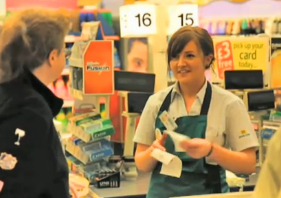Time & Convenience Part II: How Grocery Shopping Changes with Each Generation
Are retail executives prepared to do what it takes to adapt?
There is a new generation of shoppers – a generation whose expectations of in-store shopping are based on their on-line shopping experience. However, a recent study conducted by Capgemini indicates that there is a disconnect between retail executive’s perceptions and that of the shopper; following are some highlights of the study.
In-store shopper expectations are high. They expect products to be in stock, to be able to price compare while they shop, to receive excellent service, to have delivery options and to be entertained while shopping. Net Promoter Score (NPS) is a metric that indicates the likelihood that a customer will recommend a product/store/service to a friend or colleague. In this study, in-store customers gave very low Net Promoter Scores for the stores they shopped, and the younger the shopper, the lower the score. While there were a variety of reasons for dissatisfaction, 66 percent of customers cited ‘long queues at checkout counters’ as their main frustration. Across all retail segments surveyed, retail executives gave much higher NPS scores than those of the shopper. In grocery, for example, executives’ NPS scores averaged 32 and shoppers 14. Over half of the executives surveyed acknowledged that they were moving slower than they liked to make needed changes, but also indicated that they were wary of fully implementing technical and operational initiatives without a proven ROI.
This study isn’t the only one to indicate customers’ continued dissatisfaction with long lines. According to the American Customer Satisfaction Index (ACSI) 2016 Retail Report, customers continue to give their lowest satisfaction ratings to the ‘speed of the checkout process’. To meet the new shopper’s expectations requires both data-driven technology and a focus on operational initiatives. Meeting these high consumer expectations is a huge challenge for bricks and mortar stores. One aspect of that challenge is making the checkout process fast and efficient for in-store shoppers. Grocery giant Kroger is an example of a retailer that focused on improving the customer experience in their stores. The Irisys Queue Intelligence System was a key element of their ‘Customer First’ strategy and helped them to significantly reduce wait time at checkout, increase customer loyalty and increase sales. To learn more about the Kroger project click here.
The Irisys Queue Intelligence System is designed to use the data from your store to optimize check-out labor, provide 24-hour monitoring and reporting of your store’s check-out service, and provide tools to help meet your front-end service goals. For information about the how the Irisys Queue Intelligence System can improve labor utilization in your store and save your customers time, contact us at sales@irisys.co.uk
Share this
You May Also Like
These Related Posts

Time and Convenience Part III: How Grocery Shopping Changes with Each Generation

The great queue method debate: self-service checkout vs staffed

The Psychology of Waiting in Line
Connect with us
Need more information? Ready to get started? We're here to help, get in touch.


